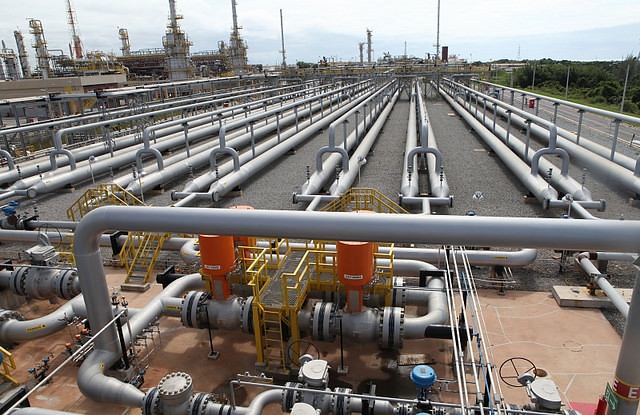
What is Asset Integrity Management?
Asset Integrity Management (AIM) is a proactive approach to ensuring that physical assets—such as machinery, pipelines, and buildings—operate safely and efficiently throughout their lifecycle, from design to decommissioning. By integrating regular inspections, maintenance planning, and risk assessments, asset integrity management prevents unexpected failures and keeps industries like oil and gas, manufacturing, and energy running smoothly. This strategy is critical where downtime or breakdowns could lead to significant safety hazards or financial losses.
For example, in a factory with heavy machinery, asset integrity management ensures equipment remains reliable, protecting workers and maintaining production. Unlike reactive fixes, AIM focuses on prevention, making it a cornerstone of modern industrial operations.
How Asset Integrity Management Enhances Performance, Risk, and Costs
Asset integrity management delivers three core benefits: improved performance, reduced risks, and optimized costs. Here’s how it works:
Boosting Performance with Asset Integrity Management
Asset integrity management enhances asset performance by leveraging advanced tools like sensors and predictive analytics for condition monitoring. These technologies detect early signs of wear, allowing maintenance to be scheduled before failures occur. This minimizes downtime and ensures consistent output. For instance, a vibration sensor on a factory motor can predict when repairs are needed, keeping production steady. Optimized asset design, built with integrity in mind, further improves durability under operational stress, ensuring long-term reliability.
A surprising perk? Asset integrity management often incorporates AI and digital twins—virtual replicas of assets—to forecast performance issues with precision, going beyond traditional checkups.
Reducing Risk Through Asset Integrity Management
Asset integrity management lowers risks by proactively identifying vulnerabilities and preventing disasters. Risk-based inspections (RBI) prioritize maintenance on high-risk components, such as pipelines prone to corrosion. Techniques like ultrasonic testing can spot issues early, averting leaks or ruptures in oil and gas operations. Compliance with standards like ISO 55000 and API 580 ensures safety for workers and the environment. By addressing potential failure modes through detailed analysis, AIM prevents costly incidents and enhances operational security.
An unexpected detail: AIM can reduce corrosion-related failures by up to 30%, a game-changer for industries handling hazardous materials.
Optimizing Costs with Asset Integrity Management
Asset integrity management saves money by extending asset lifespan and avoiding emergency repairs. Regular maintenance and early interventions reduce the need for expensive replacements while minimizing downtime that can cost millions. For example, scheduling repairs during planned shutdowns is far cheaper than handling sudden breakdowns. In offshore oil platforms, asset integrity management can save up to $500,000 daily by preventing unplanned outages, proving its financial impact.
The use of data-driven resource allocation—focusing on critical assets—further maximizes cost efficiency, debunking the myth that maintenance always drives up expenses.
Detailed Look at Asset Integrity Management
Definition and Importance
Asset integrity management (AIM) is a systematic discipline that balances performance, safety, and cost across an asset’s lifecycle. It involves maintenance planning, condition monitoring, and regulatory compliance to ensure assets like power plants or oil rigs remain functional and safe. According to Oil and Gas IQ, AIM protects health, safety, and the environment, especially in high-stakes sectors like upstream oil and gas, where ageing infrastructure and rising energy demands amplify its importance.
AIM’s role is more vital than ever, driven by global pushes for sustainability and safety in industrial operations.
Performance Enhancement Through AIM
Asset integrity management keeps assets reliable by using predictive tools to monitor conditions in real-time. Preventive maintenance, tailored to asset health rather than rigid schedules, maintains peak functionality. In manufacturing, for instance, vibration sensors on rotating equipment can predict motor issues, avoiding production halts. This proactive approach ensures steady performance, a benefit often overlooked by those unfamiliar with AIM’s depth.
Risk Mitigation with AIM
By focusing on high-risk assets, asset integrity management prevents catastrophic failures. Risk-based inspections and failure mode analysis identify weak points—like pipeline corrosion—before they escalate. In oil and gas, this means fewer environmental disasters and safer workplaces. The process—assess, identify, prioritize, mitigate, monitor—creates a robust safety net, making AIM a proactive shield against uncertainty.
Cost Efficiency via AIM
Asset integrity management optimizes budgets by reducing downtime and extending asset life. Early fixes avoid the chaos of unplanned repairs, while strategic maintenance planning allocates resources wisely. Offshore platforms, for example, benefit from AIM’s ability to prevent outages that could cost $500,000 daily, showcasing its economic value across industries.
Future Trends in Asset Integrity Management
Asset integrity management is evolving with technologies like artificial intelligence, the Internet of Things (IoT), and digital twins. These innovations enable real-time decision-making and predictive insights, boosting efficiency and safety. AI can analyze vast datasets to pinpoint failure risks, while digital twins simulate asset behavior, offering a futuristic edge to traditional AIM practices. For businesses, this shift makes AIM a strategic tool for staying competitive in a regulated, fast-paced world.
Why Asset Integrity Management Matters
Asset integrity management is more than a technical process—it’s a pathway to sustainable success. By enhancing performance, reducing risks, and optimizing costs, AIM ensures assets remain reliable, safe, and cost-effective. From preventing pipeline leaks to maintaining factory output, its impact is undeniable. As industries face growing complexity, asset integrity management stands out as a critical strategy for innovation, safety, and profitability.
